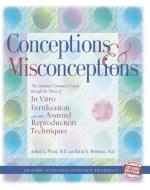|
This section contains 966 words (approx. 4 pages at 300 words per page) |

|
Success for an animal species does not only mean that it survives, but that it survives to reproduce. When a species or population of organisms is unable to reproduce enough offspring to keep the population numbers high, extinction is the result. However, reproduction is probably one of the most energy-depleting events a single organism may endure. Both plants and animals have a wide range of reproductive methods that result in repeated matings, fertilization, production of offspring, and survival of the next generation. However, for many groups, including some plants, all of the energy produced by the organism is directed to successful reproduction.
Within the animal group, invertebrates have a wide variety of reproductive strategies that insure their survival. Many produce so many eggs and sperm that the sheer numbers of offspring make success of a few likely.
| Feature | Texas | South Carolina | Ohio |
| Growth | rapid... |
|
This section contains 966 words (approx. 4 pages at 300 words per page) |

|


